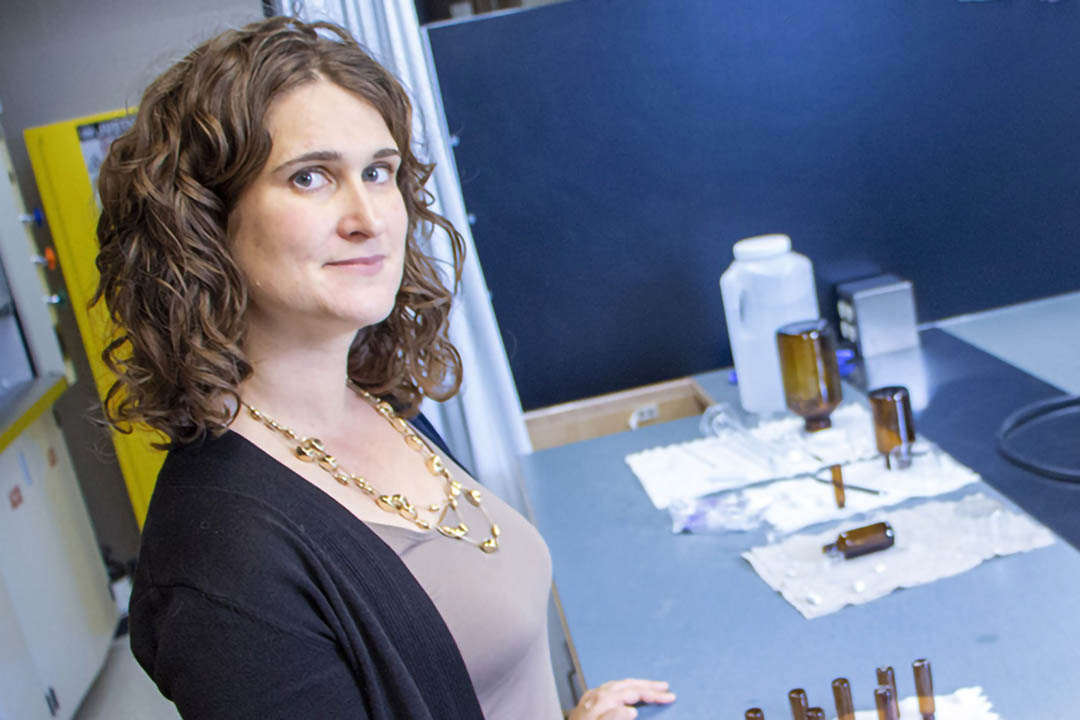
USask chemist wins national institute’s early career research award
University of Saskatchewan (USask) researcher Dr. Tara Kahan (PhD), recognized as a world leader in both atmospheric chemistry in snow and ice (cryospheric chemistry) and indoor chemistry, has won the Chemical Institute of Canada (CIC) Environment Division’s 2023 Early Career Research Award.
“I’m still processing. Getting this award is really exciting,” said Kahan. “People who have won this award in the past are people whom I greatly admire. Being put in the same category as them is validating and really important recognition by my peers.”
As the winner, she will present a keynote lecture at CIC’s Canadian Chemistry Conference and Exhibition (CSC 2023) in Vancouver in early June.
Kahan was recruited to join USask’s College of Arts and Science chemistry department in 2018 after six years at Syracuse University as an assistant professor. She was awarded a Tier 2 Canada Research Chair in Environmental Analytical Chemistry in 2019.
“In her short time at USask, she has shown herself to be a world-class scholar whose research has had impact at both the national and international level,” wrote Dr. Matt Paige (PhD), head of the chemistry department, in a letter supporting the CIC nomination.
“Her contributions to research are evidenced by her scholarly publication record, her participation in international collaborative research projects, her track record of invited conference presentations and by how highly in-demand she is for public scientific outreach.”
Kahan’s groundbreaking research on ice-surface chemistry includes using a specialized laser-based Raman microscope to demonstrate for the first time that pollutants behave very differently on snow and ice than in liquid water. Kahan said this finding could settle what had been ongoing confusion, disagreement and debate in the cryospheric chemistry community about it.
“This allows us to move forward with making atmospheric models that, for instance, predict what will happen in the future in the Arctic as it warms, opening up shipping lanes and adding more pollution that affects the ecosystem there. It could also open up the way to new remediation opportunities based on some of the chemistry that we see.”
Dr. Paul Shepson (PhD), dean of the School of Marine and Atmospheric Sciences at Stony Brook University in New York, wrote that the analytical methods Kahan has developed to characterize physical and chemical properties of air-ice interfaces have led to new insights about reactions in snow-covered regions and “shattered” long-held views.
“Tara has shown us a new picture of nature’s reality … she has taken us a quantum leap forward,” Shepson wrote.
Kahan is also pioneering methods and tools to research how solutes—chemicals like salt spread on roads—affect the chemistry of ice and snow at the surface, the complex reactions that occur when salt combines with decaying organic matter, and the unintended consequences of the byproducts for land and aquatic life.
She describes having access to the Canadian Light Source to understand how molecules behave at the ice surface as a huge benefit that makes her move to USask that much more career-enhancing.
Kahan’s other major research area is indoor chemistry. She gained international attention during the height of the pandemic-induced frenzy of cooking (on gas stoves) and hyper-cleaning by people confined to their homes with research that showed high levels of reactive and toxic oxidants and providing the first time-resolved measurements of nitrogen oxides and nitrous acids in the air.
“Mostly what I am doing is finding new ways to measure what’s in the air, and then using those methods to see how things that people do affect the air that they are breathing,” she said.

